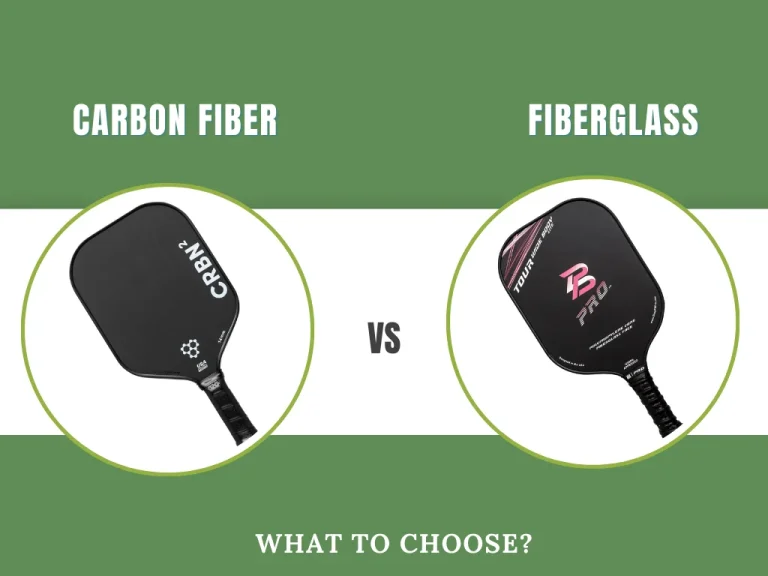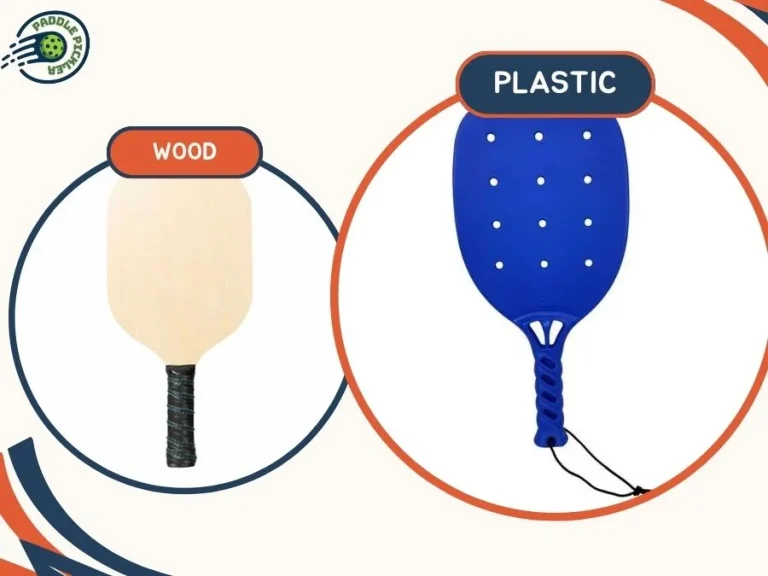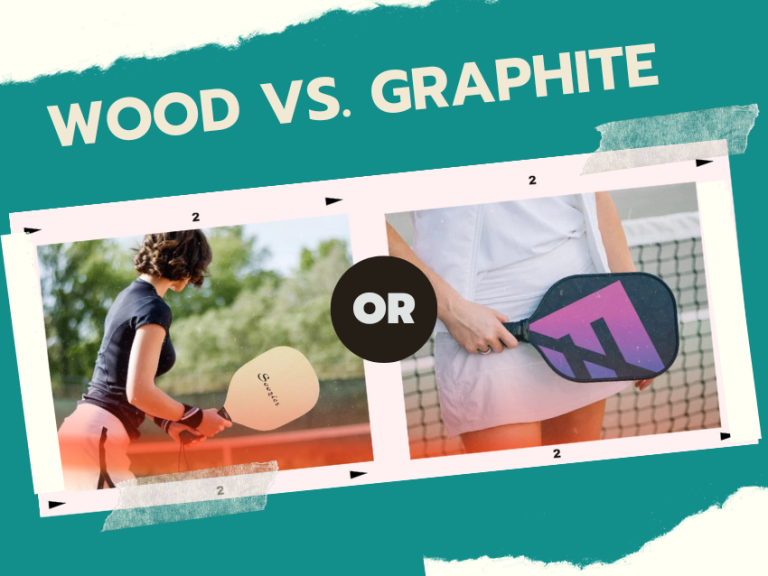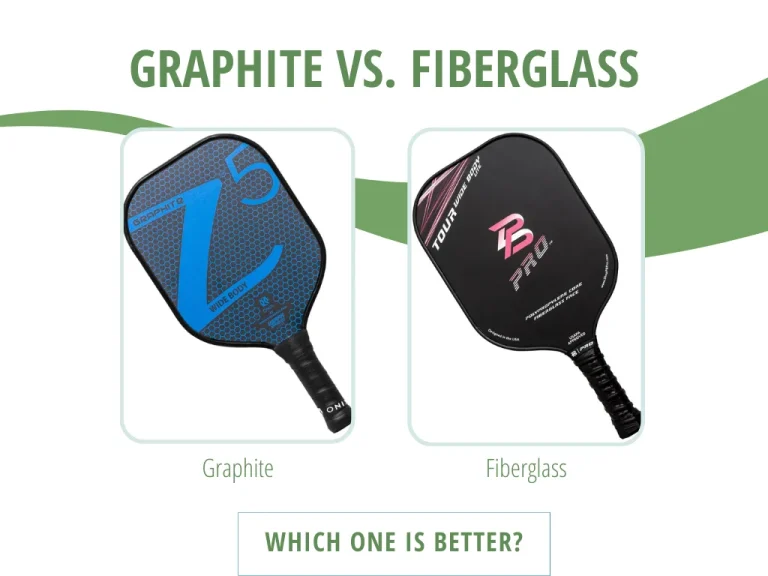Pickleball is winning the hearts of millions worldwide and growing in popularity. Central to mastering this game is selecting the right material for pickleball paddle being the most crucial piece.
Choosing between Wood vs. Fiberglass pickleball paddles is usually a challenging decision. So let’s explore five different aspects between them.
Each material has benefits and drawbacks of its own. For instance, a wooden paddle offers superior control and precision because of its larger weight. Meanwhile, a fiberglass paddle is lighter, more flexible, and enables easier spin steps. As a result, we must know their structure and function to determine what we are suitable for this paddle.
Key Takeaways
- For frequent play, fiberglass is more durable.
- Wood is heavier, offering better control but causing fatigue during long games. Fiberglass is more powerful and spin-efficient, lighter, and more flexible.
- Wood is budget-friendly (great for beginners). Fiberglass comes at an extra cost.
- The best way to choose is to test paddles from both categories and select the one that feels most comfortable and effective.
About Wood Pickleball Paddles
Pickleball paddles made primarily of wood are usually layered or stacked for extra durability. This type of paddle is weighed down, providing good control and a solid feel on the ball, which is ideal for precision shots.
Beginners and recreational players like them because they are affordable and, with the right care, very durable. Wood paddles provide a traditional feel. But they lack the enhanced performance elements of modern paddles.
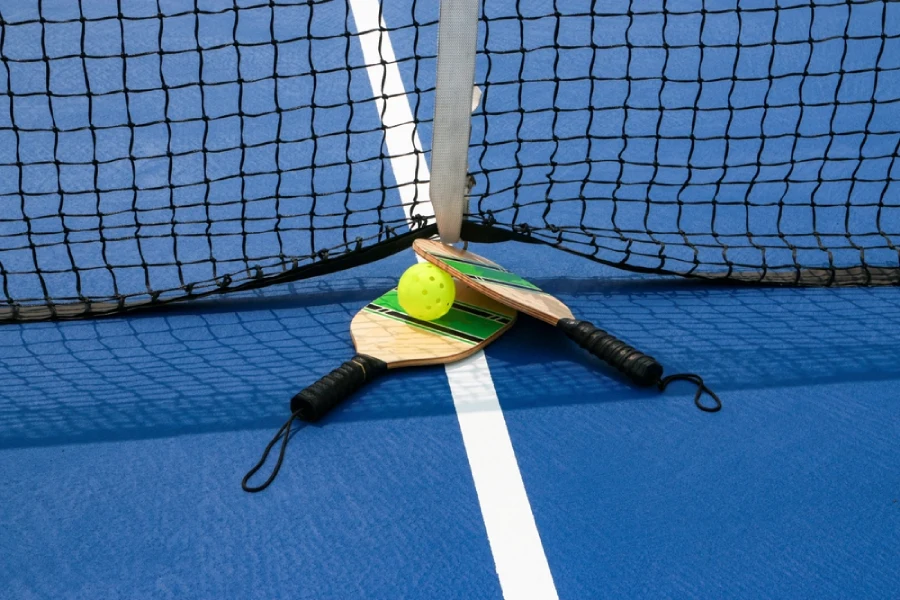
About Fiberglass Pickleball Paddles
Because of their fiberglass surfaces and composite aggregate construction, they provide greater power and spin with a smoother, more stable playing surface. These are built to be long-lasting.
So, mid-level to high-level players usually like fiberglass pickleball paddles better because they help in contests and improve their game.
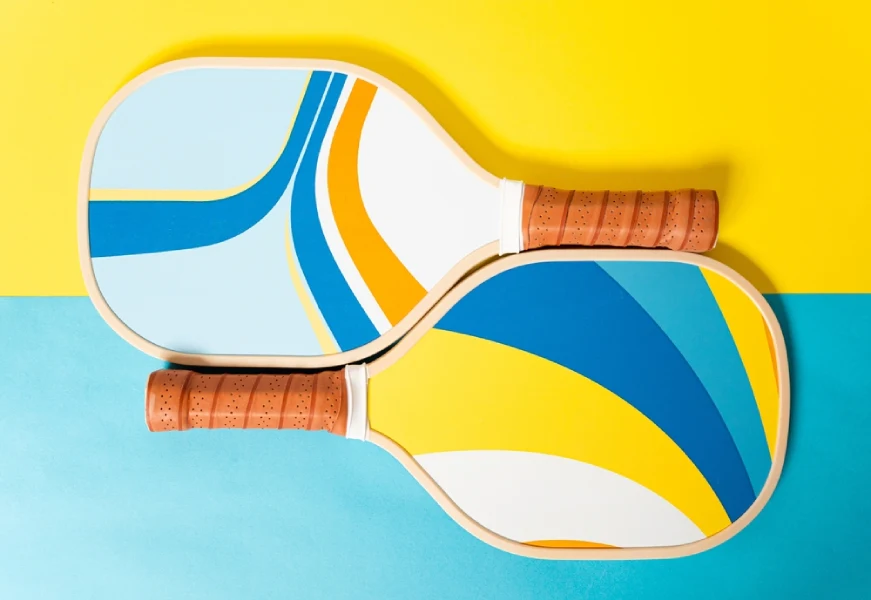
Table Of Comparison
Now, let’s take a look at the table below to compare specific distinctions between the two types of paddle materials.
| Key Note | Wood Pickleball Paddles | Fiberglass Pickleball Paddles |
|---|---|---|
| Materials | Solid wood (maple, plywood) | Fiberglass face with composite or polymer core |
| Weight | Heavier (7.5 – 9.5 ounces) | Lighter (6.7 – 8.4 ounces) |
| Control | High | Moderate to high |
| Grip circumference | Typically 4 – 4.5 inches | Typically 4 – 4.5 inches (more ergonomic options) |
| Touch and feel on the ball | Excellent (traditional, solid feel) | Very good (consistent, less vibration) |
| Durability | High | High |
| Price | Lower (around $10 – $50) | Higher (around $40 – $150) |
| Users | Users Beginners, recreational players | Intermediate to advanced players, competitive players |
Key Differences Between Wood & Fiberglass Surface
#1. Durability
Fiberglass pickleball paddles tend to be more durable than wooden paddles. Uni Composite pointed out that fiberglass is stronger than wood because wood is natural. That is why it can be affected by humidity as well as other factors that are in the environment.
However, the paddles made of fiberglass need less maintenance and are damage-resistant compared to the wooden ones. But if proper care is taken about wooden rackets, then they are very long-lasting. I even have this wooden racket that I purchased a couple of years ago and it is still going strong.
#2. Weight
A wooden pickleball paddle will be a bit heavier than a fiberglass paddle. Based on the data published by many pickleball paddles brand, a wooden paddle tends to be heavier (7.5 – 9.5 ounces). It provides stability but potentially causes fatigue during prolonged play. While a fiberglass paddle is lighter (6.7 – 8.4 ounces), it offers greater agility and reduces arm strain.
#3. Performance
Power & Speed
A pickleball paddle made from wood will provide the player with greater speed and force than a fiberglass one. In physics, momentum is mass times velocity. So, a paddle with more mass can transfer more momentum to the ball during a swing, resulting in a faster and more powerful shot.
On the other hand, the lightweight fiberglass paddle enhances the player’s movement and is more nimble compared to the other types. The advanced materials also enhance the paddle’s responsiveness.
Control and accuracy
Wooden paddles offer superior control and precision over fiberglass due to their substantial weight and durable design. Because of their hardwood construction, they are heavier than fiberglass surfaces and provide both enhanced and steadier shots.
A fiberglass paddle is lighter and requires less force to hold. This provides greater flexibility when controlling the body’s paddle. In comparison to wood, lightweight design may impair control. But it still offers dependable accuracy, ideal for advanced players.
Spin control ability
The fiberglass paddle will be more spin-controlling than the wooden type. The construction of wood provides an excellent touch and feel. But wooden material paddles typically have less rotation due to their smoother surface and larger weight. It is more challenging to make successful spin shots.
The sophisticated materials and rough surface of fiberglass paddles lead to great spin management. With the reduced weight and improved shape, spin shots are easier to execute and more successful.
Handle design and comfort.
With a fiberglass paddle, you can hold it much better than with a wooden one. Handle designs for wooden paddles are traditional and basic. They do not have the ergonomic qualities of contemporary paddles. Meanwhile, ergonomic grip designs are common on fiberglass paddles to reduce stress on the hands and enhance comfort. They include various grip sizes and textures to accommodate player preferences and be comfortable for prolonged play.
#4. Cost
After researching costs on online retailers, I realized that a fiberglass paddle would cost around 3.5 times as much as a wooden paddle. Since wood paddles usually cost between $10 and $50, beginners or non-professionals can afford them. Fiberglass paddles get more costly, about $40 to $150 or further, for better materials and performance characteristics.
#5. Sound
Wooden paddles will produce a more powerful sound than fiberglass paddles. Upon making contact with the ball, wood paddles create a traditional, resonant, and enlarged sound. Due to their composite design, fiberglass paddles offer a softer sound. So, they’re more suitable for indoor play in noisy environments. When I chatted with some veteran players, most of them preferred the ‘pop’ sound while hitting the ball with a wooden paddle.

Which Surface Material Is Better?
Hands-on Experience with Fiberglass Material
- The lightweight allows for faster swing speeds and more powerful shots.
- The textured surface of fiberglass enhances spin capabilities.
- Resistant to wear and tear and can withstand intense play sessions.
- Generally more expensive than wood paddles due to advanced materials and manufacturing processes.
- Players who love the “pop” of wooden paddles may find the quieter sound less appealing.
Hands-on Experience with Wood Material
- Heavier weight and solid construction provide excellent control.
- Can be quite durable with proper maintenance.
- More budget-friendly compared to fiberglass and other composite paddles.
- Heavier weight can lead to fatigue during prolonged play sessions and may limit maneuverability.
- Less effective in generating power and spin compared to fiberglass and other modern paddle materials.
- Requires periodic sealing and care to maintain performance and durability.
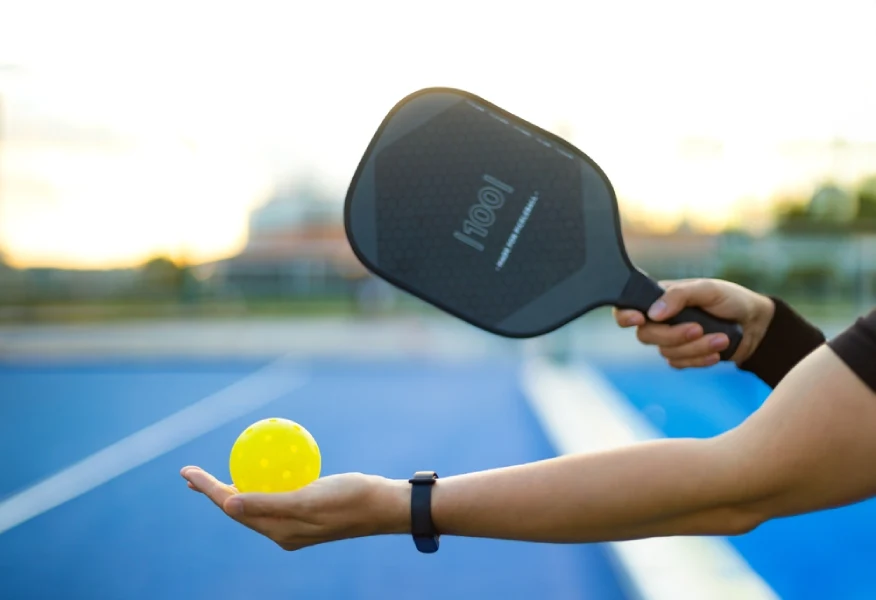
Wood vs. Fiberglass Pickleball Paddles: What Should I Choose?
If you are new to pickleball and have a limited budget, a paddle from wood is a great choice for you.
Choose fiberglass if you’ve been in the game for a while, have loads of experience, and can pay for it.
However, player preferences for pickleball paddle materials extend beyond fiberglass and wood. More options are available for paddle materials, including plastic, hybrid, and graphite paddles.
I am a great pickleball fan and have been playing it for many years. Previously, I had learned to play pickleball and had chosen a wooden racquet. After first year, gaining greater skills, I decided to move to fiberglass paddles. It’s lighter and allows me greater shooting liberty. Despite the higher cost, I’m glad I switched to this fiberglass material. My friends have even complimented me on improving my play in recent games.

Fermin Mize
Co-Founder of Paddle Pickler
Final Though
The decision between fiberglass and wood paddles comes down to personal preferences for playing style, price range, and performance level. But after reading the last post, it makes sense that you’ve decided whether a wooden or fiberglass pickleball paddle is better for you.
You may select the gear that best suits your pickleball experience and ensures the greatest performance on the court by being aware of two types of paddles.


